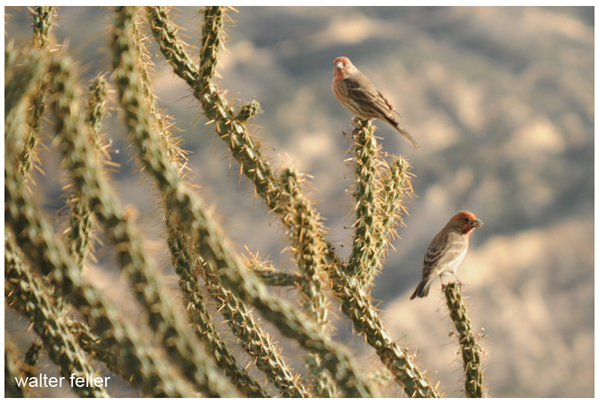House Finch

The House Finch (Haemorhous mexicanus) is a small bird native to western North America, but it has successfully expanded its range across most of North America and even into parts of Central America. It belongs to the family Fringillidae, which includes finches, crossbills, and siskins.
Here are some key characteristics and information about House Finches:
Appearance:
Male House Finches typically have bright red plumage on their heads, throats, and chests. However, the intensity of the red color can vary. Females and juveniles lack the vibrant red color and are generally brown and streaked. Both sexes have relatively long, notched tails and thick bills adapted for eating seeds.Habitat:
House Finches are adaptable and can be found in a variety of habitats, including urban and suburban areas, gardens, and open woodlands. They are commonly seen at bird feeders, where they feed on seeds.Diet:
House Finches primarily feed on seeds, fruits, and buds. They have adapted well to human environments and readily consume seeds from feeders.Behavior:
These finches are social birds and often gather in flocks, especially during the non-breeding season. They have a varied and melodious song, and males may sing to establish territories and attract mates.Breeding:
House Finches can breed throughout the year, depending on the region and food availability. They build cup-shaped nests in a variety of locations, including trees, shrubs, and even on buildings and ledges.Range:
Originally native to the western United States and Mexico, House Finches were introduced to the eastern United States in the 1940s. Since then, they have expanded their range across North America.Adaptability:
One reason for the House Finch's success in expanding its range is its ability to adapt to a variety of environments, including urban and suburban landscapes.Health Note:
House Finches were also involved in a well-known case of a bacterial eye disease called "House Finch eye disease" caused by the bacterium Mycoplasma gallisepticum. This disease can cause red, swollen, and crusty eyes in infected birds. Observing House Finches can be an enjoyable experience for bird enthusiasts, especially if you provide them with bird feeders stocked with seeds.These birds are mainly permanent residents; some eastern birds migrate south. Their breeding habitat is urban and semi-open areas from southern Canada to Mexico.
House Finches forage on the ground or in vegetation. They primarily eat grains, seeds and berries, being voracious consumers of weed seeds such as nettle and dandelion; included are incidental small insects, such as aphids and plant lice.
Originally a resident of the southwestern United States.